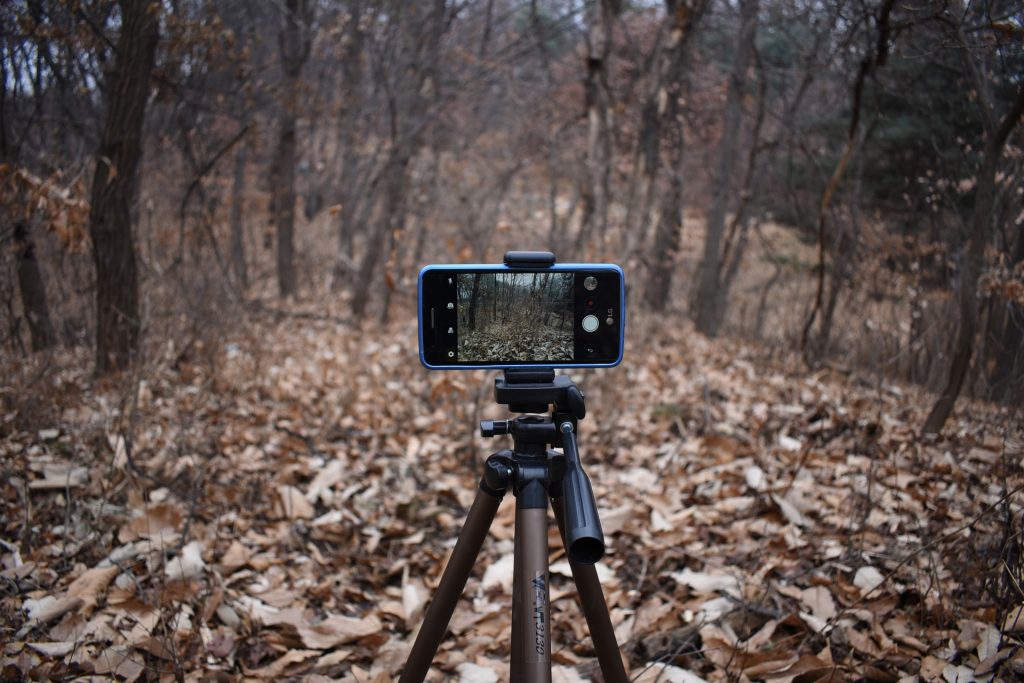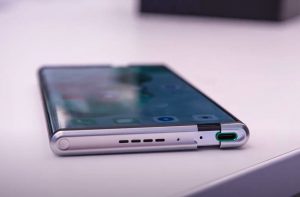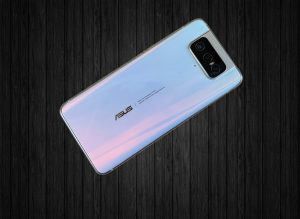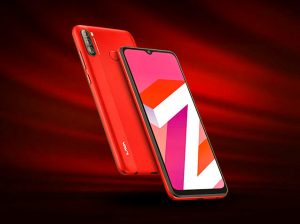
Overview
A mobile phone having a camera can capture pictures and can also record video. Nowadays Mobile phones come with one or more built-in cameras with better resolution. Mobile cameras can send the resulting image wirelessly and more conveniently. The first commercial camera phone had been the Kyocera Visual Phone VP-210, released in Japan in May 1999.
Camera phones:
Most camera phones can be smaller than separate digital cameras. In the smartphone era, everyone prefers to buy a phone built-in with the better and clear camera. Most modern mobile phones have a menu choice to start a camera application program and an on-screen button in order to activate the shutter. Some mobile phones have a separate camera button. some phones are designed for resembling separate low-end digital compact cameras in appearance and in features and picture quality and are designed as both mobile phones and cameras.
Advantages of mobile phones designed with cameras.
- The principal advantages of camera phones are that it saves your cost and gives you compactness.
- As you get a digital camera built-in your phone, you don’t have to buy a camera separately and this saves you from double costing.
- Camera phones are easy to carry in your pockets or handbags but for a digital camera, you have to carry a bag.
- As you are habituated to carry a phone always and so always get a camera ready too.
- If you have a camera with your phone you don’t have to carry an extra charger bag to charge your camera separately which is also an advantage for having a camera phone.
- Cameraphones with touch screens have the advantage of directing their camera to focus on a particular object in the field of view for that just need to tap on your screen to focus a specific area and get a clear view of that.
- All high-end smartphones come with cameras that have multiple lenses with different functions, to make more use of a device’s limited physical space.
Multiple types of mobile phone camera:
- Wide angle
- Ultra wide angle
- Telephoto
- Periscope
- Monochrome
- Macro
- TOF/ Depth.
The technology of camera phones:
Nearly all camera phones are using CMOS active-pixel image sensors (CMOS sensors) because of reduced power consumption in comparison to charge-coupled device (CCD) type cameras, which few camera phones are using.. Some camera phones use CMOS back-illuminated sensors, because of using even less energy, at higher price than CMOS and CCD.
The usual fixed-focus lenses and smaller sensors is known to limit performance in poor lighting. Some camera phones Lack a physical shutter, some camera phones may have a long shutter lag. Photoflash by the typical internal LED source can illuminate less intensely over a much longer exposure time than a flash strobe, . Optical zoom and tripod screws are known to be rare and some also may lack a USB connection or a removable memory card. Most of the camera phones having Bluetooth and WiFi can make geotagged photographs. The expensive camera phones have only a few technical disadvantages, but may have with bigger image sensors (a few are up to 1″, such as the Panasonic Lumix DMC-CM1). The few hybrid camera phones are equipped with real optical zoom lenses.
As camera phone technology is progressing, lens design has been evolved from a simple double Gauss or Cooke triplet to many molded plastic aspheric lens elements which are made with varying dispersion and refractive indexes. Some phone cameras also are applying distortion (optics), vignetting, and various optical aberration corrections to the image before it is being compressed into a jpeg format.
Most of the camera phones are designed with a digital zoom feature. A few camera phones may have optical zoom, and some may have a few cameras with different fields of view, being combined with digital zoom as a hybrid zoom feature. An external camera is able to be added, coupled wirelessly to the phone by Wi-Fi. They can be compatible with many camera phones. Windows Phones are able to be configured to operate as a camera even if the phone is sleeping.
Modern phones with cameras produce advanced video with a capability of up to 4K 60fps.
When viewed vertically from behind, the rear camera on some mobile phones is seen to be located in the top center, while other mobile phone cameras are seen to be located in the upper left corner. In terms of ergonomy, the latter has benefits because of the lower likelihood of covering and soiling the lens when it is held horizontally.
MMS, a feature of camera phones:
Through Camera phones you can share pictures instantly and automatically. Early developers such as Philippe Kahn had envisioned a technology to enable service providers in order to collect a fee every time anyone snaps a photo”.The resulting technology is Multimedia Messaging Service(MMS) and Sha-Mail, which were developed parallel to and in competition to open Internet-based mobile communication that has been provided by GPRS and later 3G networks.
The first commercial camera phone was the J-SH04, designed by Sharp Corporation with an integrated CCD sensor, with the Sha-Mail (Picture-Mail in Japanese) feature developed in collaboration with Kahn’s LightSurf venture, and marketed from 2001 by J-Phone in Japan today which was owned by Softbank.
It was also known to be the world’s first cellular mobile camera phone. The first commercial deployment in North America of camera phones was in 2004. The Sprint wireless carriers had deployed over one million camera phones which were manufactured by Sanyo and launched by the PictureMail infrastructure (Sha-Mail in English) developed and managed by LightSurf.
Early mobile phones had Internet connectivity, working web browsers, and email programs but the phone menu never offered any way to include a photo in an email or in order to upload it to a website. Connecting cables or removable media to enable the local transfer of pictures had been missing also. At that time MMS was one of the newly invented features to share photos paying an amount. In modern times,
modern camera phones have almost unlimited connectivity and transfer options.
Most of the camera phones are designed with a digital zoom feature. A few camera phones may have optical zoom, and some may have a few cameras with different fields of view, being combined with digital zoom as a hybrid zoom feature. An external camera is able to be added, coupled wirelessly to the phone by Wi-Fi. They can be compatible with many camera phones. Windows Phones are able to be configured to operate as a camera even if the phone is sleeping.
Modern phones with cameras produce advanced video with a capability of up to 4K 60fps.
When viewed vertically from behind, the rear camera on some mobile phones is seen to be located in the top center, while other mobile phone cameras are seen to be located in the upper left corner. In terms of ergonomy, the latter has benefits because of the lower likelihood of covering and soiling the lens when it is held horizontally.
Related Post
The rollable concept of a smartphone features and their details
The rollable concept of a smartphone features and their details The rollable concept of a smartphone features a scroll-like display which is built with an OLED flexible screen measuring as …
Smartphone effects on children and their negative impacts
Smartphone effects on children and their negative impacts People worldwide are using mobile phones as well as children for purposes like playing games, watching videos or cartoons. Some children talk …
Negative impacts of smartphone on teenager and youth
Negative impacts of mobile phone on teenager and youth A mobile phone being a handy tool, can ease communication with colleagues, friends, and relatives. This technology provides many more benefits …
Harmful Effects of using mobile phone for a long time or continuously
Harmful Effects of using mobile phone for a long time or continuously Mobile phone is needed in our day to day life. We require a mobile phone for personal as …
Nokia mobile phone brands and their details
Nokia mobile phone brands and their details Nokia Corporation known as Nokia is one of the most popular companies which is Finnish multinational telecommunication, information technology, and consumer electronics company. …
Lenovo mobile phone brands and their details
Lenovo mobile phone brands and their details Lenovo Group Limited known as Lenovo is a Chinese multinational technology company which was Incorporated in Hong Kon. Lenovo is headquartered in Beijing, …
ASUS mobile phone brands and their details
ASUS mobile phone brands and their details ASUSTek Computer Inc. is a Taiwanese multinational computer and phone hardware and electronics company being stylized as ASUSTeK or ASUS is situated in …
HTC mobile phone brands and their details
HTC mobile phone brands and their details HTC Corporation , the High Tech Computer Corporation which was earlier Hongda International Electronics Co., Ltd. is now trading as HTC. HTC is …
Lava mobile phone brands and their details
Lava mobile phone brands and their details Lava International, an Indian multinational electronics company manufactures smartphones, laptops, computer hardware’s and consumer electronics being founded in 2009 as an offshoot of …
LG mobile phone brands and their details
LG mobile phone brands and their details LG Corporation (or LG Group) which is formerly Lucky Goldstar from 1983 to 1995 is a South Korean multinational conglomerate corporation. It is …











